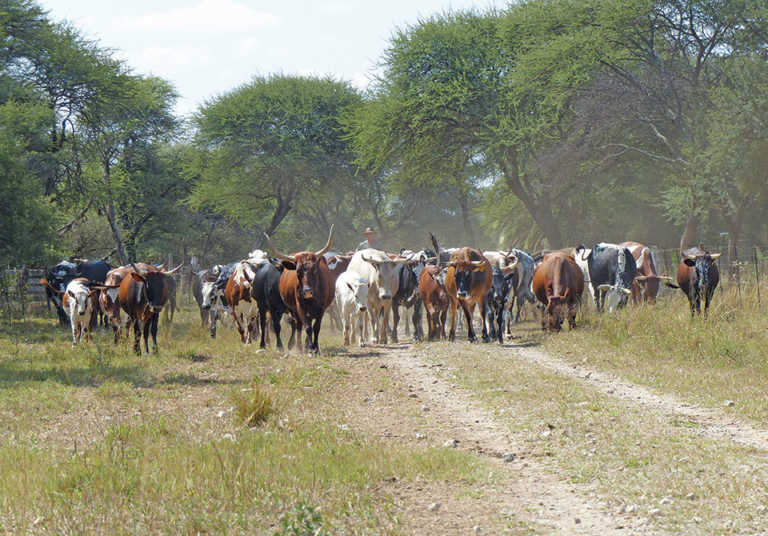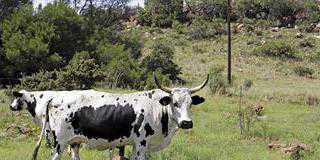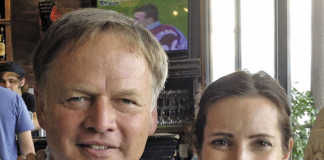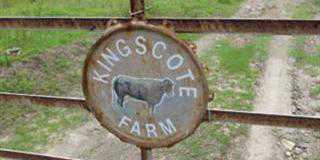
Photo: Mike Burgess
“Fertility is non-negotiable,’’ says Jannie Breytenbach about his Goedvoor Nguni herd.
“I don’t have a place for a passenger that doesn’t calve.’’ Jannie stands by his word. His herd of 60 carefully selected stud females – with mature cows weighing between 430kg and 460kg – has a 100% calving rate, thanks to his dedication to getting the best from his Ngunis. “My life is all about Ngunis,’’ he says. “I eat and sleep cattle.’’
From commercial herd to stud herd
Jannie’s father, Hendrik, began farming Afrikaner cattle on Goedvoor near Marble Hall in Limpopo in the early 1970s. After spending two years in the army, Jannie returned to the farm in mid-1986, and by the early 1990s had begun crossing Afrikaners and Ngunis.
He sourced his first Nguni bull from Theo Dicke near Duiwelskloof, another bull from the former University of the North near Polokwane, and five cows from Belfast in Mpumalanga.
The thinking behind the crossbreeding programme (which contributed to the development of the Sanganer breed) was to develop a hardy and fertile indigenous dam line able to produce quality weaners.
However, after a few years, Jannie decided to farm only pure Ngunis and began selecting to improve fertility as well as conformation.
In fact, when he purchased 60 Nguni cows from the PJD Ngunis dispersal sale in the Pienaars River area of Limpopo in 1998, his focus was first and foremost on the fertility of specific dam lines.
“I went for the cows that were fertile and had good inter-calving periods (ICPs),’’ he says.
“Fertility isn’t easily inherited, so I bought animals that already had fertility and decided that the looks (conformation) could be added later with bulls.’’
Throughout the late 1990s and early 2000s he continued to select replacement heifers based on the fertility of their dams and their ability to produce sufficient milk.
“You need a balance – a cow with good milk production that gives you a heavy calf and is fertile,’’ Jannie explains.
In 2002 he bought an eight-year-old bull that would end up transforming his herd. The animal, NI 94 205, from Dr Nico Coetzee’s Coze Nguni Stud near Mokopane, had exceptional conformation. “All my 2003 and 2004 calves are from him,’’ he says.
“I built my entire herd around his daughters.’’ In 2005, Jannie registered the Goedvoor Nguni herd and two years later it made national headlines with a South African record price at the Highveld Nguni sale.
Goedvoor Nguni herd’s fertility
Since then, Goedvoor Ngunis have gone from strength to strength. In fact, with an average herd ICP of 367 days for the past seven years, the herd’s fertility speaks for itself.
With the exception of the 2014 season, when two cows failed to calve due to one of the region’s most grueling droughts in decades, the herd has achieved a 100% calving rate for the past six years. What is more, Jannie has hardly ever lost a calf after birth. For the bulk of his farming career he has consistently weaned 100% of his calves.
Although it has rarely been necessary, a cow that does not calve is immediately culled, while most heifers are expected to calve by 24 months. Jannie says, however, that he has given heifers born in winter (and from known fertile dam lines) up to 30 months to calve. If they fail to do so in this time, they are culled.
Nevertheless, the extreme fertility of the Goedvoor heifers has been a revelation to him over the years. In 2014, for example, two heifers calved at 15 months and 24 days, and 16 months and five days, respectively.
Both these animals are currently pregnant and are expected to calve again before the age of 26 months. At the other extreme, Jannie has ploughed genetics back into his herd.
These have come, for example, from a cow that produced 19 calves in 21 years, while currently one of his most prized cows (with an ICP of 332 days/16 calves) will drop her 17th calf at 16 years and 11 months.
Weaners and bulls
Two to three bull calves are selected for future breeding duties each year and the rest are weaned and sold – at an average weight of 187kg to 200kg at seven months – to a feedlot owned by Dr Piet Prinsloo of Haakdoring near Mookgopong.
Although Jannie receives about R1/kg less for his Nguni weaners than heavier weaners from some other breeds, he says he more than makes up for this through the sale of his Nguni heifers.
“The R200 or so that I lose on a weaner [ox], I make up by a few thousand rand on a heifer. I’ve sold weaner heifers for up to R10 000 in the past,’’ he says.
Jannie has also received exceptional prices for his bulls, including R46 000 for GHB 04 14 at the 2007 Highveld Nguni sale, and recently, R48 000 for GHB 10 302 at the 2014 Springbokvlakte Nguni Club Internet Sale.
He normally uses bulls like these on his own heifer herd before selling them to fellow breeders at about three years of age. He sees this as a good advertisement of their quality.
“I sell bulls that I’m willing to use in my own herd,’’ he says.
Jannie also sources one to two bulls every second year to diversify the genetic gene pool of the Goedvoor herd. When buying a bull he makes an effort to isolate those produced by exceptionally fertile dam lines exhibiting good milk production qualities.
These are not necessarily ‘showroom’ bulls, however. Top bulls he has purchased over the years include NI 94 205 and GMD 01 13 (the latter for R92 000) from Mike Greyling at the Highveld Nguni Sale in 2007, while the current herd sire Oscar (GMD 04 30) was also sourced from Mike Greyling.
The Goedvoor Nguni herd is defined by two single sire herds – a heifer and a cow herd. Jannie has never adhered to a set breeding season but the vast majority of his female cattle calve in September or October.
He is, however, now considering establishing a breeding season from the beginning of December to the end of February to minimise the risk of calves arriving in winter. Doing this would also improve management, including the effective marketing of weaners.













